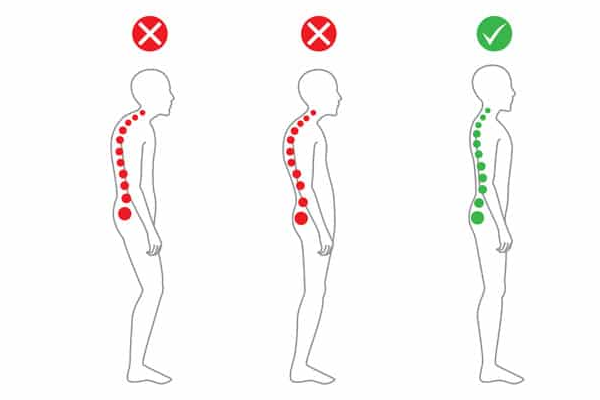What is Neutral Spine

Neutral spine position is crucial
Neutral spine is the natural position of the spine when all 3 curves of the spine—cervical (neck), thoracic (middle) and lumbar (lower)—are present and in good alignment. This is the strongest position for the spine when we are standing or sitting, and the one that we are made to move from.
Finding Your Neutral Spine Position
Basic position. Lie on your back with your knees bent and your feet flat on the floor. Make sure that your legs are parallel with your heels, toes, knees, and hips all in one line. Let your arms rest at your sides. Push into the floor. Relax your body, including your shoulders, neck, and jaw. Allow your back to rest on the floor, without effort. Your rib cage is dropped with the lower ribs released to the floor as well. Breathe deeply. Bring your breath all the way into your body, allowing it to move into your back and the sides of your rib cage, and all the way down to the pelvis.
Pelvic Tilt.
Exhale and use your abs to press your lower spine into the floor in a pelvic tuck. Inhale to release.Exhale and pull your lower spine up, away from the floor creating a pelvic tilt. Inhale to release.
Keep the Spine Neutral
Many people habitually have their spine in one of these two positions, tucked or tilted.
To be in neutral spine, you want to be in between these positions, with the lower abs flat and just a slight, natural curve of the lower spine off the floor.
Use the following images to establish neutral spine.
Balanced Pelvic Placement.
Imagine that there is a cup of water sitting on your lower abdomen, just a couple of inches below your belly button. Allow your abdominal muscles to drop in toward your spine, making your belly flatter. Remember that you don't want the water to spill, so your pelvis cannot be tipped forward or tucked under.
Body Scan.
You should now be relaxed with your body in a balanced alignment on the floor. Your breath is deep and full, and your abdominals drop toward the floor. The natural curves of the neck and lumbar (lower) spine, however, are away from the floor. Be sure that your lower spine is not pressed into the floor. That would be a pelvic tilt.
The take-away.
Now the big trick is to be to maintain this spinal position as you begin your moves. Start by lifting your right leg up and placing it back down without letting your hips move. Then repeat the motion with the left leg. Engage the abdominal muscles to help stabilize the pelvis making sure it doesn't move. Can you do both legs with ease? Now test yourself with both. Exhale deeply and left your legs up while keeping your core and pelvis stable. Then lower them back down. As you do this progression you may find that you want to release the abs and let the back arch. This will take you into your tuck and tilt. If you have difficulty doing this progression, practice.
… Just do something. The results will Come!!!!
Call Steve, In-Training Sports | 561-281-8330
In Training Sports
www.intrainingsports.com
Personal Trainer,
servicing West Palm Beach, Palm Beach, Wellington and Jupiter Florida
3131 Village Blvd, #305
West Palm Beach, FL 33409